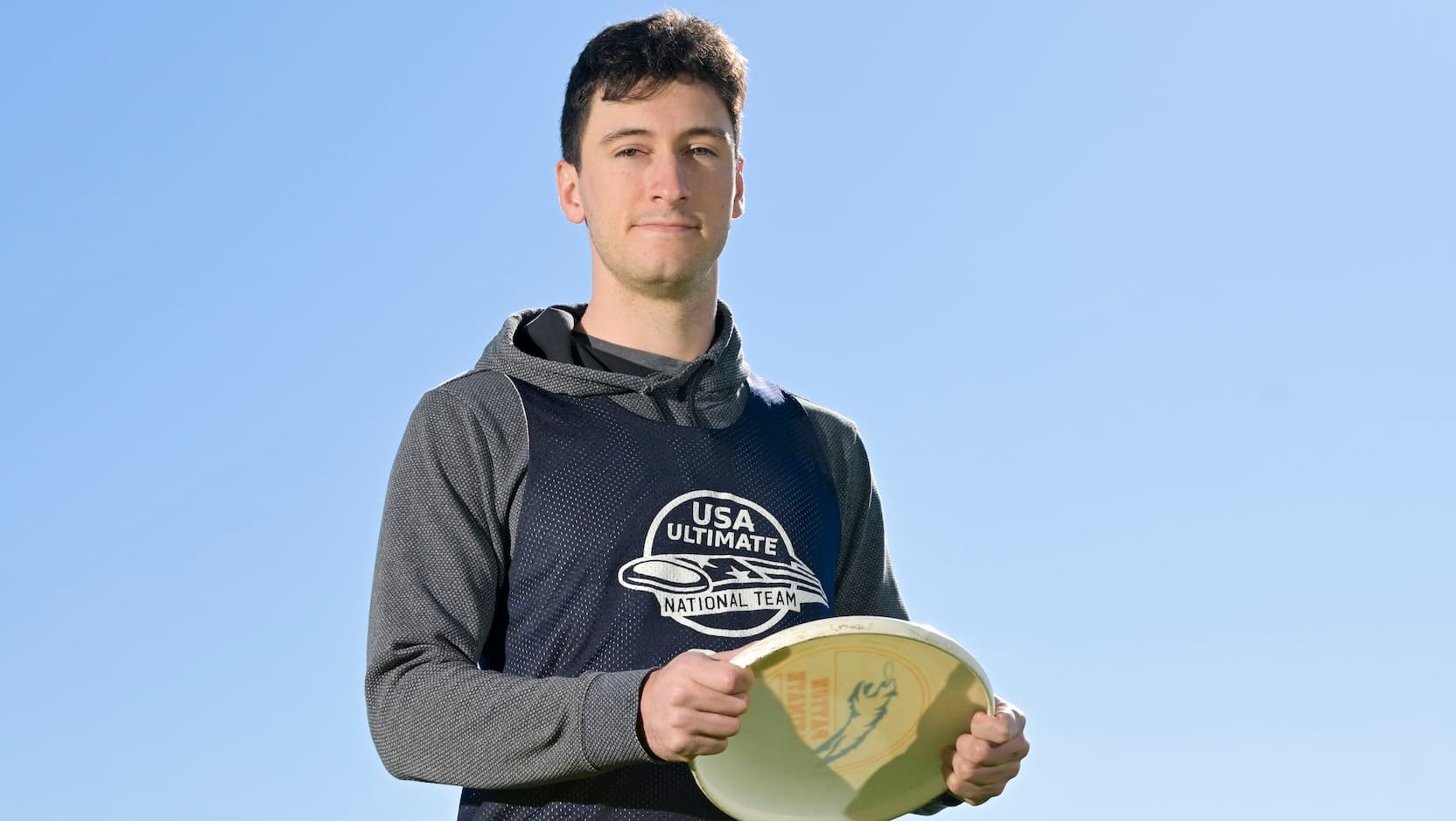GAE helps young athlete find relief for ‘jumper's knee’ pain and avoid surgery

As a player on two ultimate frisbee teams, Eli Artemakis was tough on his knees. The 20-year-old would jump, pivot and run at multiple practices and games every weekend.
But in the summer of 2022, Artemakis’ knees started to hurt during games, forcing him to the sidelines. Even with rest, his knees would tighten and sometimes lock up. Standing for long periods was difficult.
He pushed through the pain for a few months, but it got progressively worse. Soon he couldn’t play frisbee at all.
Artemakis saw a doctor who diagnosed him with patellar tendonitis — also known as PT or “jumper’s knee” — an overuse injury common among athletes. Platelet injections, electrostimulation and physical therapy helped a little, but not enough to get him back in the game.
“I was open to try anything that might work," said Artemakis, who played for Chicago Union, Ultimate Frisbee Association’s professional team, and was named Division 1 College Rookie of the Year in his first season with the University of Illinois’ team. “I was losing my prime playing years.”
New solution for pain
Artemakis’ father, Angelo, scoured medical journals and studies looking for ways to treat his son’s condition. He found a doctor in Japan who used genicular artery embolization (GAE) to treat high-performance athletes with patellar tendonitis, providing them with instant relief.
GAE is a relatively new treatment designed to eliminate newly formed abnormal arteries that grow into the knee joint and cause inflammation.
During the procedure, imaging is used to locate abnormal vessels. Then, an oil-based agent is injected into the artery near the knee to block the problematic vessels, returning the joint to a more normal blood flow and curbing the pain.
Angelo reached out to University of Chicago Medicine vascular and interventional radiology to ask if GAE was an option for his son. Even though his physician had never done the procedure for a patellar tendonitis patient before, he was so confident it would help, he told him "Yes.”
GAE can be suitable for patients like Artemakis who aren’t having success with traditional pain relief methods. It also may be an option for people who aren’t ready for, or not a good candidate for, knee replacement surgery due to things like advanced osteoarthritis, diabetes and obesity.
Quick, effective approach
Performed under light sedation, the interventional radiology procedure takes about 30 minutes. A catheter is placed in the upper groin area and travels down to the knee. The patient stays in the hospital for a few hours afterward to recover from sedation and make sure there are no bleeding complications.
UChicago Medicine was one of the first hospitals in the country to offer GAE four years ago, and since then, it’s been steadily gaining popularity.
It's now being used to treat other sports injuries — including Achilles tendonitis, bursitis, frozen shoulder, plantar fasciitis and tennis elbow — that until now may have required more invasive treatment or surgery that have longer recovery times.
Back in the game
Instead of traveling halfway around the world for GAE, Artemakis simply drove a few miles from his North side home to UChicago Medicine in Hyde Park. His right knee was done first at UChicago Medicine in March 2024, followed by his other knee two weeks later.
Five weeks after that, he joined his team for his college regional ultimate frisbee tournament — a milestone that was very important to him.
For Angelo, the difference in his son “was like night and day” after GAE, and his improved mobility allowed him to try out for another U.S. national team a few months later.
Artemakis said his knees “felt different” initially, and he had some weakness and soreness. But after a few months, “I felt confident that the pain wasn’t going to come back.”
Artemakis, now 23, is working in communications and is back to playing frisbee in competitive club competition.
“I’m very close to 100% now,” he said. “I’m not where I was, but I can pretty confidently play for long periods of time without the pain coming back. I’m definitely happy I did it.”
Learn More about GAE
- Q&A: GAE for knee arthritis
- Call us at 773-834-3531
Second Opinions and Contact Us
For referrals, second opinions or general questions about genicular artery embolization (GAE), please contact us at 773-926-8458.
